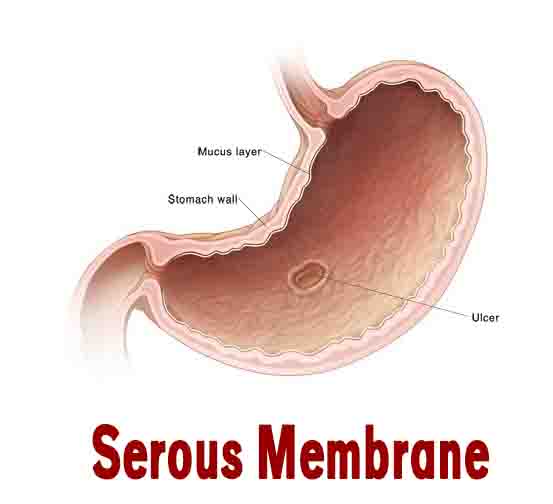Serous Membrane Definition
The serous membrane, or serosal membrane, is a thin membrane that lines the internal body cavities and organs such as the heart, lungs, and abdominal cavity. The thin membrane is made up of mesothelium tissue which originates from the mesoderm. The serous membrane allows for frictionless movement in a number of vital organs.
There are a number of serous membranes in the body: the pericardium surrounds the heart and some of the blood vessels; the pleural membranes surround the lungs, and the peritoneal membrane surrounds the abdominal cavity and related organs. There are also serous membranes surrounding the testes (the tunica vaginalis).
Serous Membrane Structure
The serous membrane is made of two layers of mesothelium joined by a layer of loose connective tissue and sitting on a basal lamina. An internal visceral layer surrounds the organs, while a parietal layer forms the walls of the body cavities. The serous membrane generally forms an airtight seal around the body cavity.
The mesothelium cells produce glycosaminoglycans and other substances that act as a lubricant. The two mesothelium layers are able to move effortlessly over each other due to this thin layer of fluid between the two.
Serous membranes vary in size and complexity. The pericardium and the pleura are fairly simple, with smooth contours. The peritoneum is the largest membrane with a convoluted shape in some regions, and a surface area that can measure as much as the surface area of the skin (approximately 1.8 m2).
Serous Membrane Function
The serous membrane has a number of functions related to protection of the organs and body cavities which it encloses. It allows the frictionless movement of the heart and lungs, as well as the organs of the abdominal cavity. This allows movement of the smooth muscles without damage to the organs.
As with any semi-permeable membrane, the serous membrane also acts to regulate movement of fluids and other substances across the membrane. Additional functions include the synthesis of cytokines and other molecules involved in membrane repair and inflammatory response, and the control of some immune responses including coagulation and movement of white blood cells.

